Up Your Game with This Small Business Cyber Security Plan Template
98% of small businesses were victims of at least one cyber attack in 2023. Help your company prepare for the worst with this free small business cyber security plan template
Let’s bust one of the most common small businesses (SMBs) myths: “Cybercriminals aren’t interested in SMBs; they have bigger fish to fry.” Wrong — and that assumption can cost you big time.
Cyber attacks on small companies might not get the press coverage that big businesses’ data breaches receive. However, no business is too small for hackers. More than 75% of cyber security incidents the cybersecurity company Sophos responded to in 2023 involved small businesses.
A small business cyber security plan will help you proactively protect your organization, supply chain, and customers from security threats. You don’t know where to start from? We’ve got you covered with a small business cyber security plan template that rocks. Read it, follow it, implement it — doing so could be the difference between your organization suffering a minor incident versus an all-out cyber security disaster.
Don't make the same mistakes
Yahoo, Equifax, Home Depot,
LinkedIn, and Ericsson did!
Get our free 15-point checklist and
avoid the same costly pitfalls.
Contact details collected on InfoSec Insights may be used to send you requested information, blog update notices, and for marketing purposes. Learn more...
The Ultimate Small Business Cyber Security Plan Template
A small business cyber security plan outlines the key strategies, cyber security best practices, policies, and procedures to follow to:
- Proactively protect SMBs from internal and external threats (e.g., data breaches, malware infection, ransomware), and
- Swiftly react in case of a meltdown.
Starting out with a blank slate can be daunting. After all, there is so much information to include, as it should touch on many areas of your business relating to the physical and digital security of your data, network, and overarching IT infrastructure.
The good news is that we’ve got a small business cyber security plan template ready to go. All you’ll have to do is fill in the five template sections following our suggestions, customize it to your needs, and you’ll be good to go.
| Small Business Cyber Security Plan Template Sections | Examples |
| 1. Small Business Cyber Security Plan Objectives | Protect the integrity and authenticity of data. Comply with industry regulations. Ensure uninterrupted operations in case of incidents. |
| 2. Common Threats | Malware infections. Man-in-the-middle (MitM) & adversary in the middle (AitM) attacks. Phishing. |
| 3. Cybersecurity Policies | Use only reliable anti-virus/malware software. Implement website communications encryption. Sign and encrypt your emails and attachments. Create and implement IT security policies. |
| 4. Incident Response Plan | Key contacts and assets lists. Incident’s severity levels description. Response process. Incident recovery process. Lesson learned. |
| 5. Employees Education | Email security. Password security. Data security. |
Section #1. Small Business Cyber Security Plan Objectives
Kick off your small business cyber security plan template with well-defined, achievable goals. It’ll be your compass for the next steps. Start with the basics, focus on the most high-risk areas, and keep it short and sweet.
Here are a few examples of objectives:
- Protect the integrity and authenticity of your networks and data. Shield your organization’s network(s) and customers’ data at rest (i.e., stored in a database) and in transit (i.e., exchanged between a server and a client) against leaks, compromise, and malware infection.
- Comply with industry regulations. The EU General Data Protection Regulation (GDPR) and the latest Payment Card Industry Data Security Standards (PCI DSS) requirements effective by Q2 2025 are just two examples.
- Ensure uninterrupted operations in case of incidents. Respond quickly to attacks to minimize downtime, data, and productivity loss.
Section #2. Common Threats
Address each security threat that could impact your business. Associate common vulnerabilities to your business’s assets (e.g., devices, network infrastructure, software, customers’ information, and databases). Here are some typical risks.
- Malware infections. With 6.06 billion attacks recorded by SonicWall in 2023, malware downloads can infect software, systems, and personal devices used for work.
- Man-in-the-middle (MITM) & adversary-in-the-middle (AitM) attacks. Transmitting sensitive data (e.g., credentials, account details, or credit card numbers) through unencrypted connections (i.e., websites without secure socket layer/transport layer security [SSL/TLS] certificates) leaves them exposed to manipulation and eavesdropping. It also leaves your larger systems at risk of exposure to unauthorized access and manipulation by the attacker.
- Phishing. According to Zscaler, phishing attacks grew by 58% yearly in 2023. If this wasn’t enough, Verizon’s latest Data Breach Investigation Report (DBIR) reported that it takes users less than 60 seconds to fall for a phishing email. Yup, all it takes is one click on a malicious link to a phony website, and you can kiss goodbye to your credentials.
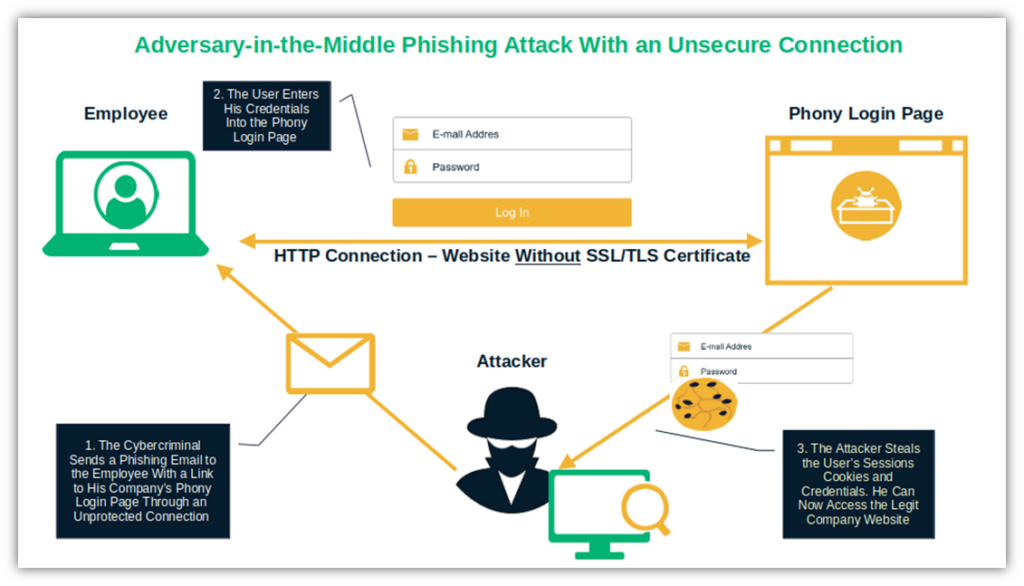
Section #3. Cybersecurity Policies and Controls
How will you protect your company’s assets from your outlined threats? Answer this question in this section. To give you an idea, we’ve taken the flaws mentioned in point two and listed the security policies, practices, and procedures that could do the trick:
- Use only reliable antivirus/anti-malware software. Install and run it on all devices to stop malicious programs from getting into your local systems and network(s). Automatically scan your website for threats and vulnerabilities using a website security checker tool like SiteLock or CodeGuard. Sacrificing the cost of one lunch out per month is a small investment compared to the $4.45 million average global cost of a data breach IBM reported in 2023.
- Implement website communications encryption. Protect your data, organization, and customers from MITM, AitM, session hijacking, ransomware, malware attacks, and data breaches with encryption. Purchase an SSL/TLS digital certificate issued by a trusted certificate authority (CA). Resellers like SectigoStore.com are ideal for small businesses. We offer a vast selection of certificates from some of the industry’s leading CAs at heavily discounted prices.
- Create and implement IT security policies. A data protection policy (DPP), an acceptable usage policy (AUP), an access control policy (ACP), and an remote access policy (RAP) are just a few of the essentials you should include in your small business cyber security plan template. They’ll help you ensure that the rules you’ve implemented will be followed by the whole organization. They’ll detail employees’ roles and responsibilities, ensuring that everyone feels responsible for the organization’s cybersecurity.
- Sign and encrypt your emails and attachments. Ensure all emails sent to your employees and customers are digitally signed with an email signing certificate. It’ll protect them against phishing by confirming that you’re the sender and informing them if it has been modified. This type of certificate also enables end-to-end data protection by encrypting the contents of the messages before they leave your mailbox.

Section #4. Incident Response Plan
Money can’t buy you everything. You can have all the protections in the world; however, cyber security incidents can still happen all the time. This small business cyber security plan template category will prepare you for the worst. Its purpose is to prevent bad things from happening and minimize the damages when they do, keep you compliant with industry regulations (more on that momentarily), and get your business back on its feet as fast as possible.
Your incident response plan should include:
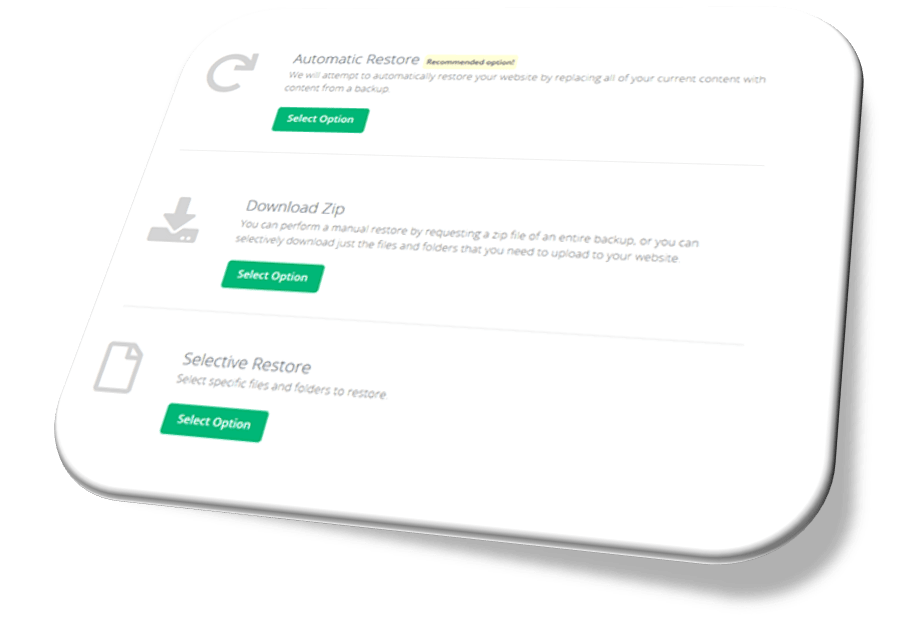
- Key contacts and asset lists. “If there is something weird and it don’t look good. Who you gonna call?” Nope, the Ghostbusters aren’t going to help you fight evil. You must create a list of key people to alert in case of a security incident. You also must create a list of all your critical assets so you’re not scrambling for an accounting when things hit the proverbial fan.
- Descriptions of incidents’ severity levels. Classify potential security incidents into low, medium, high, and critical to address them correctly.
- Response process. For each severity level, describe how the issue will be investigated, contained, and ultimately mitigated.
- Incident recovery process. Indicate how you’ll resume normal operations. Has your website been affected? CodeGuard Backup, for instance, will enable you to restore your website with a click.
- Lesson learned. Don’t let this happen again. Review the incident. Note what was done well and what wasn’t. It’ll give you valuable insights and suggestions.
Section #5. Employees Education
A small business cyber security plan is virtually worthless if your employees aren’t aware of it. Moreover, the IBM 2023 Costs of a Data Breach report proves that employee training could reduce the cost of a leak by more than $232,000. This is a real lifesaver when you consider that human factors (e.g., clicking on dodgy links or posting information on social media) were the root cause of 68% of the breaches investigated by Verizon in 2023.
Create a robust employee cyber security training and awareness program that covers not only your small business cyber security plan but also:
- Email security. Teach your users how to spot a phishing or spam emails. Highlight the value of email signing certificates and encryption.
- Password security. Explain how to generate strong passwords and enforce your password security policy best practices. Highlight the importance of changing passwords frequently.
- Data security. Show the consequences of using a weak encryption algorithm. Demonstrate how a website lacking an SSL/TLS certificate risks your customers’ sensitive data at risk and affects your company’s reputation and earnings. Raise awareness about smart devices: even an innocent-looking fish tank smart thermometer can wreak havoc if it’s not secured properly.
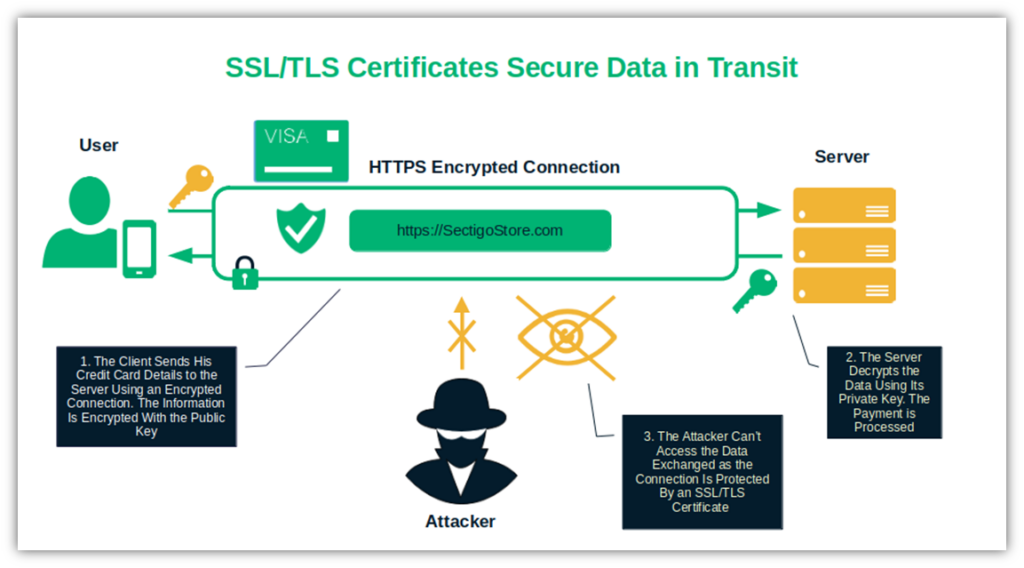
That’s it. Your turn now. Use this simple but solid small business cyber security plan template as the starting point to draft your own small business cyber security plan. And when all hell breaks loose, “May it be a light to you in dark places, when all other lights go out.” Just like the Phial of Galadriel was for Frodo Baggings in The Lord of the Rings.
Why Do You Need a Small Business Cyber Security Plan?
More than 98% of organizations polled by SecurityScorecard work with a third party that suffered a breach in the previous two years. Small businesses are attractive and easy targets. They often lack robust security systems because of limited budgets and personnel. This makes them ideal entry points for supply chain attacks that’ll subsequently affect much bigger fish.
A small business cyber security plan could be the deciding factor between a minor issue and a full-blown cyber incident. Furthermore, it’ll:
- Protect brand reputation (and sales). 60% of consumers would stop buying from a company victim of a data breach. This small business cyber security plan template will help prevent you from losing customers’ trust and safeguard your data.
- Reduce the risk of attacks.Cut down the chances of a successful attack. The measures outlined in your plan will enable you to detect and fix flaws before cybercriminals do.
- Minimize damage. 78% of small businesses confirmed that a major cyber incident could spell the end for them. A well-defined small business cyber security plan will help you respond quickly, drastically reducing the effects and consequences of attacks when they happen.
- Industry regulations compliance. Avoid hefty fines due to non-compliance with industry regulations. For instance, Payment Card Industry Data Security Standard (PCI DSS) version 4.0.1 has just been published. (Don’t worry, it’s just amending PCI DSS 4.0 and doesn’t add any new requirements.) If you handle credit card data, the small business cyber security plan and a PCI scanner like HackerGuardian will help you achieve and maintain compliance.
Additional Small Business Cyber Security Planning Resources
Looking for more info or examples of small business cyber security plan templates? Check out what we’ve found for you.
- The Federal Communication Commission (FCC) Cyberplanner. This tool will let you generate and save a customized small business cyber security template in no time.
- Small Business Cybersecurity Workbook. This resource from the Connecticut Small Business Development Center and CBIA is a step-by-step resource that dives into the nitty-gritty of things to cover when creating your small business cyber security plan template (e.g., identity management, data segregation, etc.).
- The Small Business Innovation Research (SBIR) tutorial. Explore the key elements of a typical small business cyber security plan template. This multimedia tutorial from the U.S. Small Business Association’s (SBA) program includes key links and even a quiz to test your knowledge.
- The National Institute of Standards and Technology (NIST) Cybersecurity Framework 2.0. Built specifically for small businesses, it’s a precious resource that’ll help you fill in our small business cyber security plan template in a breeze.
- The UK National Cyber Security Center Small Business Cyber Security Guide. Find even more suggestions and practical advice to improve your cyber security posture. It Includes a video collection and a personalized action plan.
- CISA Cyber Guidance for Small Businesses. It details an action plan by role covering the chief executive officer (CEO), the security program manager, and the information technology lead.
Final Thoughts About Small Business Cyber Security Plan Template
Cybercriminals often consider small businesses and startups as a supply chain’s weakest links. A strong small business cyber security plan will minimize the risk of attacks, ensure you’re as prepared as possible in the event of a breach, and help you mitigate potential damages.
Even if you can’t afford to employ a cyber security expert, having a small business cyber security plan is your best chance to keep your organization and customers secure. And, in the case when disaster strikes, survive and recover as quickly as possible.
Once you’ve generated it, share it with your employees and keep it up to date. You can have the best products or services, but if your systems are insecure, they’ll be worth nothing.



















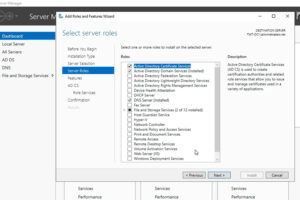

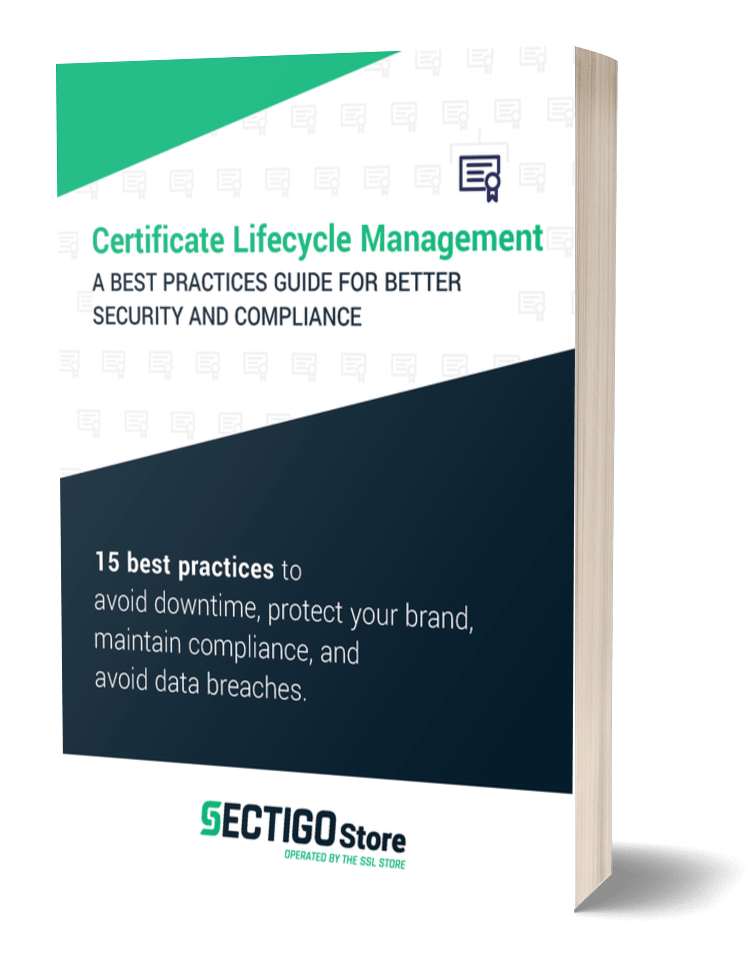
2018 Top 100 Ecommerce Retailers Benchmark Study
in Web Security5 Ridiculous (But Real) Reasons IoT Security is Critical
in IoTComodo CA is now Sectigo: FAQs
in SectigoStore8 Crucial Tips To Secure Your WordPress Website
in WordPress SecurityWhat is Always on SSL (AOSSL) and Why Do All Websites Need It?
in Encryption Web SecurityHow to Install SSL Certificates on WordPress: The Ultimate Migration Guide
in Encryption Web Security WordPress SecurityThe 7 Biggest Data Breaches of All Time
in Web SecurityHashing vs Encryption — The Big Players of the Cyber Security World
in EncryptionHow to Tell If a Website is Legit in 10 Easy Steps
in Web SecurityWhat Is OWASP? What Are the OWASP Top 10 Vulnerabilities?
in Web Security